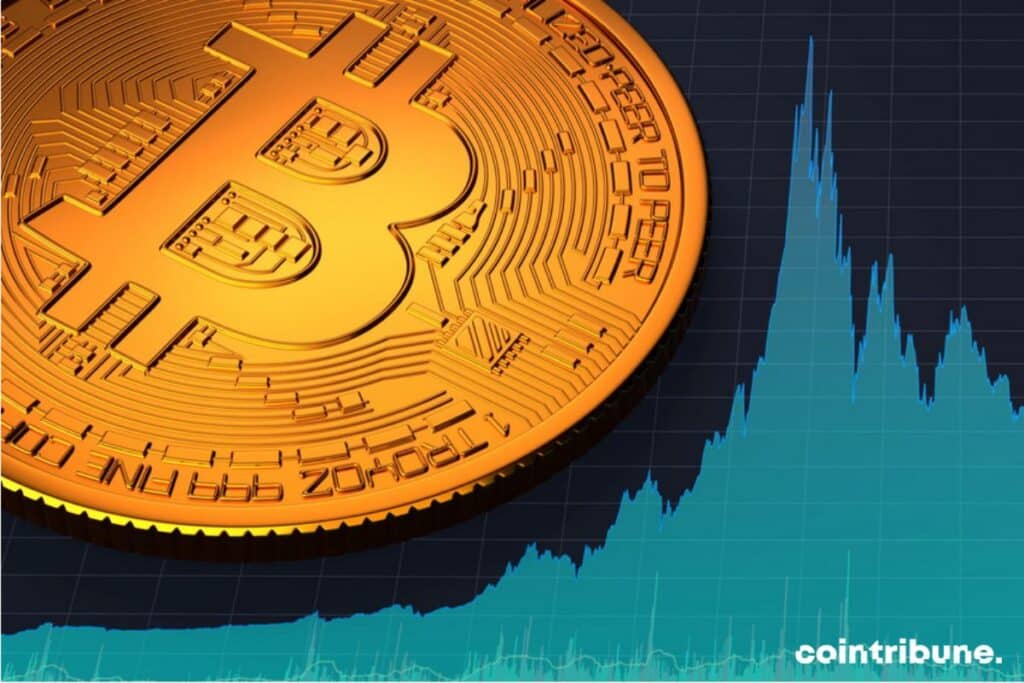Interesting way to look at BTC purchasing power, anchored to #Bitcoin halvings.
— Pierre Rochard (@BitcoinPierre) April 21, 2023
Next halving is in ~12 months pic.twitter.com/EqjUW5NmPv
A
A
The impact of the Bitcoin Halving
Thu 27 Apr 2023 ▪
5
min read ▪ by
Learn
▪
Summarize this article with:
In less than a year, the next Bitcoin Halving will take place. If history repeats itself, we may be on the verge of a new all-time high (ATH).

Bitcoin Halving
The “Halving” means cutting in half the reward earned by miners. Since 2023, miners receive 6.25 bitcoins for each block.
This reward is distributed in proportion to the power brought by miners grouped within pools. These pools build the blocks and therefore select the transactions.
By the way, there is a risk that these pools, which are few, may censor certain transactions.
The next halving should take place in April or May 2024. The exact date will depend on the evolution of the number of miners by then. A constant increase in hashrate will accelerate things.
In fact, the halving takes place every 210,000 blocks, or about every four years. We are currently at block 786,820. So the reward for each block will drop to 3.125 BTC in a year’s time. More than 92% of BTC has already been mined, and the last bitcoin will be mined around the year 2140.
What will be the impact of the halving on the value of Bitcoin?
The value of everything depends on supply and demand. If supply decreases, all other things being equal, Bitcoin will mechanically appreciate.
However, the impact of halving decreases by half each time. Reducing the reward from 50 BTC to 25 BTC affects supply more than reducing it from 25 BTC to 12.5 BTC. However, the impact remains the same if demand doubles in the meantime.
The most important factor to consider is the market capitalization of Bitcoin. The larger it is, the harder it is to move the market.
If the market capitalization of Bitcoin is worth one billion dollars, it will only take one more billion to cause a 100% appreciation. If Bitcoin is worth 500 billion, roughly 500 billion more will be needed to garner a new 100% appreciation.
In other words, the more Bitcoin appreciates, the less its potential for future appreciation (all other things being equal). This is an implacable mathematical logic. This phenomenon is very well observed in the following graph:
At each cycle (halving), the bullish effect is moderated. Look at the evolution of Bitcoin’s annual performance to convince yourself:
2010: +9900%
2011: +1471%
2012: +187%
2013: +5286%
2014: -56%
2015: +34.5%
2016: +123%
2017: +1368%
2018: -73%
2019: +92%
2020: +303%
2021: +60%
2022: -64%
2023: +70% so far
More Bitcoiners
The halving is very important, but the arrival of new investors is just as important. Past performance may be repeated if the number of Bitcoiners grows as fast as Bitcoin’s market capitalization.
Hoarding is also crucial. Good news, the number of BTC that has not changed hands for more than two years is at an all-time high. 53% of BTC to be precise. And even 67% over a year.
Something else that has changed recently is the evolution of the number of BTC on exchanges. This is the first time we have seen such massive withdrawals. The following graph shows that after a peak of 17%, only 12% of BTC is still on exchanges:
That dynamic bodes well. It means that fewer and fewer people are wasting their time playing on the Binance casino. The shitcoin purge (Terra Luna, Celius, FTX, etc.) has passed…
Bitcoin is finally seen as a long-term savings tool. A store of value that, after trailing the NASDAQ, is now correlated to gold.
Maximize your Cointribune experience with our "Read to Earn" program! For every article you read, earn points and access exclusive rewards. Sign up now and start earning benefits.
A
A
The Cointribune editorial team unites its voices to address topics related to cryptocurrencies, investment, the metaverse, and NFTs, while striving to answer your questions as best as possible.
DISCLAIMER
The views, thoughts, and opinions expressed in this article belong solely to the author, and should not be taken as investment advice. Do your own research before taking any investment decisions.